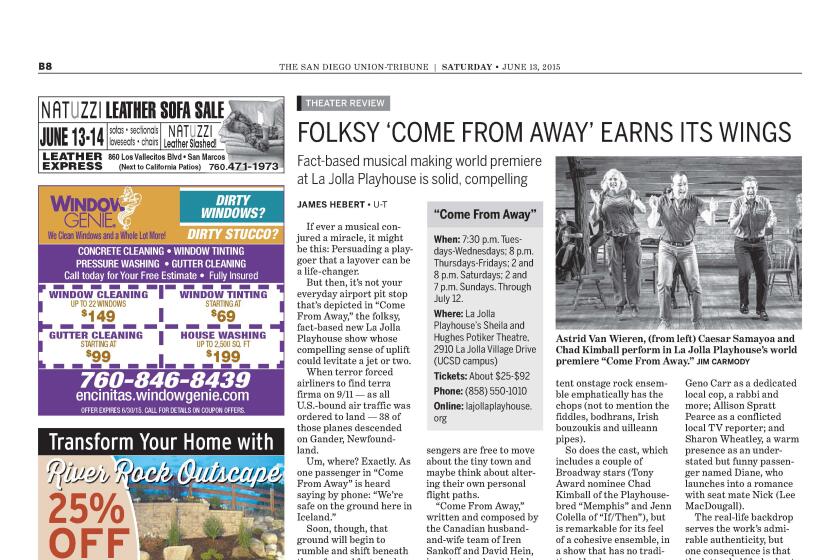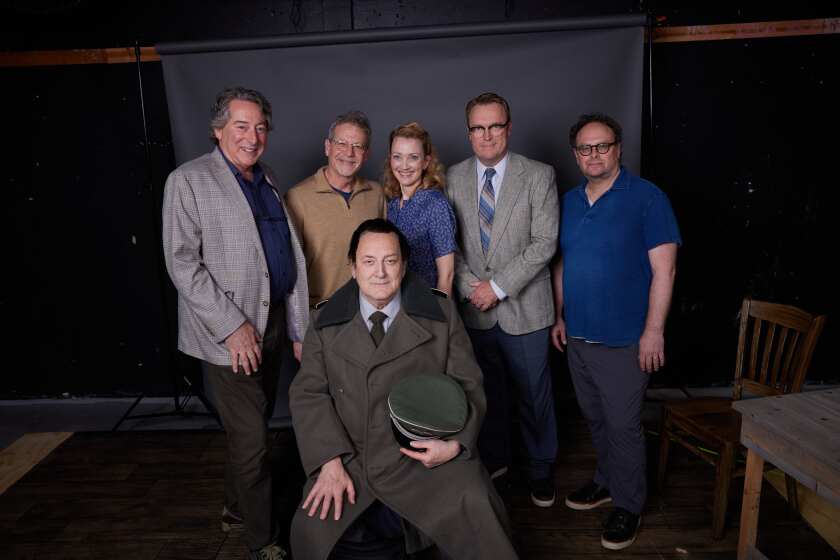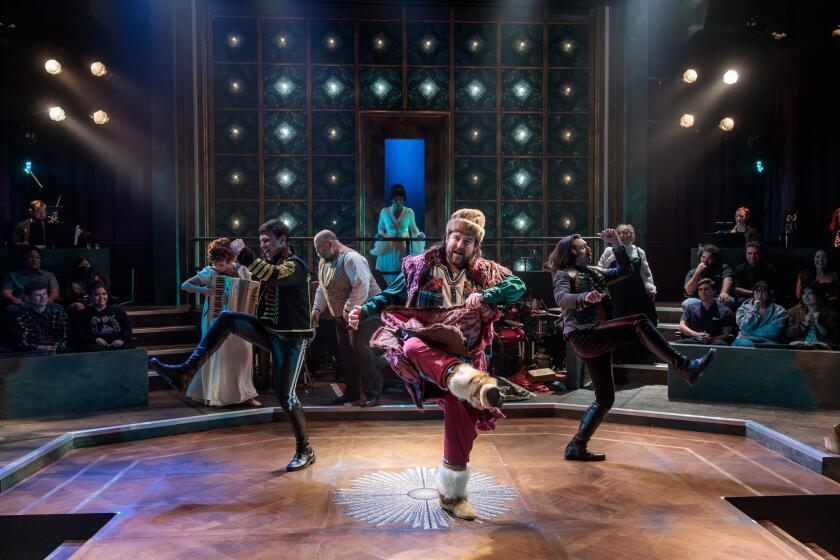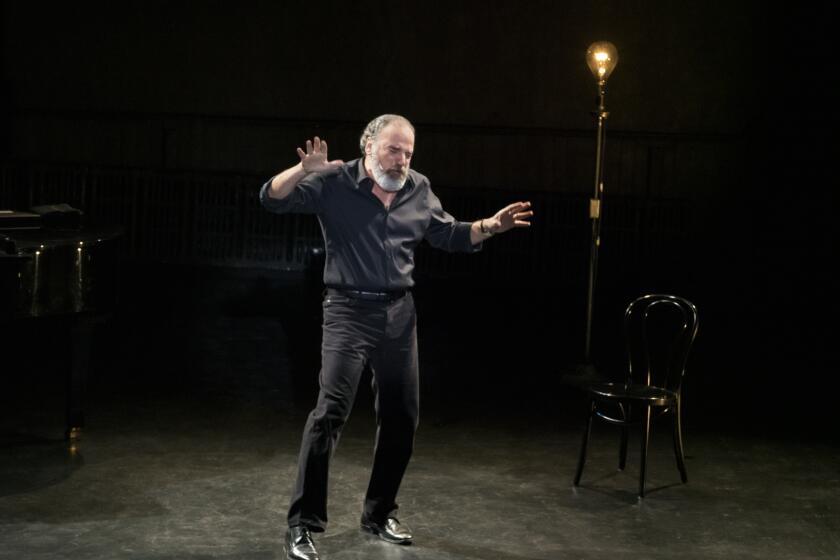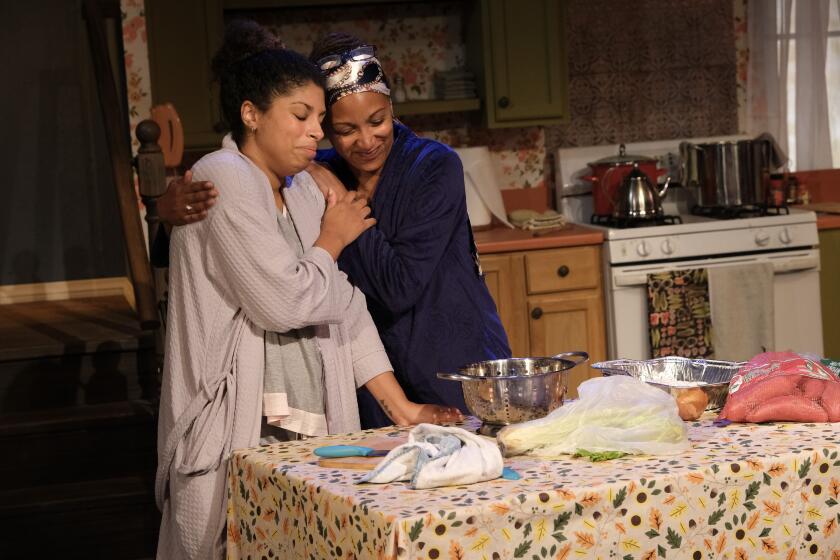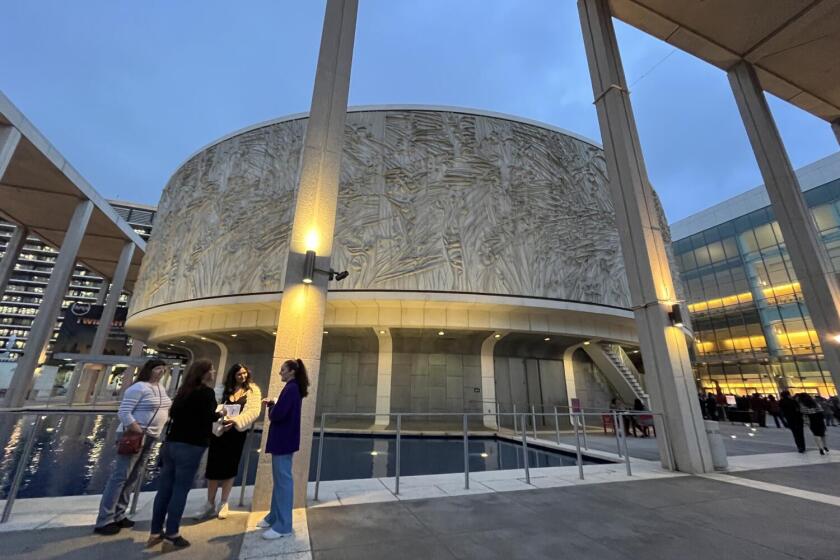Understudies find moment in the spotlight
It’s a classic moment of backstage drama: A director sending an untested understudy onstage with the words, “You’re going out there a youngster, but you’ve got to come back a star!”
Of course, that line and scene, from the musical “42nd Street,” have a lot more to do with show-biz fantasy than real life.
It’s true that understudies — or standbys, or swings, or covers, or any of the other titles that backup actors go by — are a big part of some stage productions, and that serving as one can be a key part of the career experience for a stage performer.
But what’s more common is that the understudies never do get a chance to go on, or that a production (particularly at a regional or local company) doesn’t employ them in the first place.
And yet once in a while, an understudy does have a Peggy Sawyer moment and proceeds, like that “42nd Street” heroine, to become a big star.
One of the most fabled real-life examples unfolded right here in San Diego 15 years ago this month, when Sutton Foster (who was little-known at the time) took over the title role of the La Jolla Playhouse musical “Thoroughly Modern Millie” late in rehearsals.
“It’s just possible that one of the theater’s most creaky cliches — the understudy who becomes a star — is actually happening, right before the eyes of eight audiences a week,” Union-Tribune critic Welton Jones wrote at the time.
Foster did, in fact, go on to win a Tony Award when “Millie” moved to Broadway. Today she’s one of the biggest stars in musical theater.
While the spotlight on Lindsay Brill may not have been quite so glaring, the University of San Diego graduate had a much more recent taste of that kind of heart-in-the-throat acting, as an understudy for the Old Globe’s production of “Twelfth Night” last summer.
As part of the joint Old Globe/USD MFA acting program, Brill was a member of the Shakespeare Festival production’s ensemble, and was the designated understudy for a New York stage veteran who was playing the key role of Maria.
While Brill knew the role (and had gone onstage as an understudy in another show a year earlier, with a week’s notice), it still came as a shock when she got a panicked call from the stage manager one morning asking if she could play Maria that night in place of her ill counterpart.
Brill admits that her first reaction was to wish fervently for the ailing actress’ sudden return to health. But somewhere in the aisles of a Whole Foods Market, as she was dashing to grab a bite on the way to a last-minute wig fitting, she told herself: “I can do this. I hope (the actress) is OK, but I also want to do this.”
“It was from that moment on that I kind of felt OK about it.”
As for her memories of the night: “I honestly don’t know how it went. It was a total out-of-body experience. You are performing a role in front of I don’t even know how many people. And the people who come to see shows at the Globe, they know Shakespeare, they’re educated, they’re passionate.”
One thing she had on her side: Remarkably, the lead role of Viola also was being played that evening by a USD understudy, Brill’s friend Ally Carey. She was taking over during a long-planned two-performance break by Rutina Wesley, a star of HBO’s “True Blood.”
While Carey had the luxury of much more time to anticipate taking on the role, and even to invite family (“It was the cushiest understudy job” she says with a laugh), that was also a bit of a mixed blessing.
“It was just (nervousness) of a different kind. I think when you get thrown in at the last minute, you’re really saving the show, so people will cut you a break.”
But in her case, “people might say, ‘Well she’s had time to work on this.’ I really felt I had to nail it.”
Luckily, not only did she have Brill for support, but the actress Sara Topham — who was playing the other female lead, Olivia — also proved a major comfort.
Topham came to Carey’s dressing room 30 minutes before curtain and said: “Viola has been doing her job for 400 years, so you just show up and take care of it.”
The fact that the Globe can draw on the classically trained USD actors as resident standbys for its Shakespeare shows is actually a rare luxury.
In fact, understudies are the exception rather than the rule for even large-scale productions at theaters such as the Globe and the Playhouse (although very physical shows such as the current Globe dance musical “In Your Arms,” a show that also involves commercial partners, are a different story).
Globe artistic director Barry Edelstein says there’s a sound reason for not hiring understudies: During a typical production’s run of five or so weeks at the theater, lead actors very rarely have to bow out of a performance.
“Statistically, they almost never, ever miss,” says Edelstein, who notes that the same was true during his long career as artistic chief of off-Broadway’s Classic Stage Company.
Part of that has to due with the show-must-go-on ethic of most actors working at that level. Edelstein tells of one actor who had the misfortune to eat a bad burrito off a food cart the day of a performance. Although clearly ill, he went on with the show — taking the opportunity to throw up backstage between scenes.
Of course, there’s always the exception that proves the rule: During last summer’s Globe run of the musical “Kiss Me, Kate,” one of the two leads wound up in the emergency room.
With no backup, that evening’s performance was canceled.
Crash course
An actor-related cancellation also happened at La Jolla Playhouse just last month, although under different circumstances. The actor playing the key supporting role of A. Philip Randolph in the theater’s world-premiere staging of “Blueprints to Freedom: An Ode to Bayard Rustin” left the production after previews had begun.
That show did have an understudy (although one not really intended for that role): University of California San Diego grad student Keith Wallace, who stepped in adroitly for three performances.
Wallace, though, is a good 50 years younger than the character, which required significant suspension of disbelief. So the show took a one-performance hiatus to work in a new actor, Antonio T.J. Johnson, from scratch. He was onstage almost overnight.
David Ellenstein, artistic director of North Coast Rep in Solana Beach, says his theater very rarely employs understudies and yet has only had to cancel two performances out of some 3,000 during his 14 years there.
It so happens that the director of NCRT’s upcoming show “Chapatti,” Judith Ivey, is a two-time Tony Award winner with plenty of understudy experience herself — on Broadway, where it’s much more common.
“I think one learns so much from doing it,” Ivey says. “It can be frustrating when you would like the chance to do it and you are waiting in the wings. I have to say the actresses I was understudying were all so talented that I hoped I would never have to go on and therefore be compared.”
Once, though, when she was an early-career “cover” for another actress on Broadway and ended up going onstage several times, the timing proved something like every understudy’s dream.
“The critic at The New York Times at the time did an article on standby/cover actors and compared them to the stars playing the same role,” Ivey recalls.
“In my case, the critic said, ‘Go see both.’ He thought I was equally good. That made my day!”
Get U-T Arts & Culture on Thursdays
A San Diego insider’s look at what talented artists are bringing to the stage, screen, galleries and more.
You may occasionally receive promotional content from the San Diego Union-Tribune.

